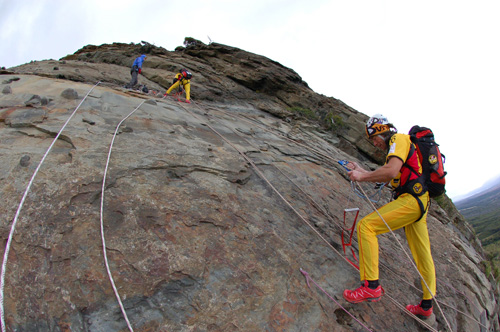On my feet, I will wear waterproof boots for much of the race. But the Inov-8 Roclite 288 GTX — a high-top with a flexible sole and sticky-rubber tread — weigh half what traditional hiking boots might clock on a scale. With such lithe boots, you trade some support and protection for faster feet. It’s worth it in a race.

(Click for PATAGONIAN RACE PHOTO GALLERY)
Finding the right outerwear and apparel for Patagonia is a major challenge. My team has decided on tops and base layers from Ibex Outdoor Clothing. The company uses a fine merino wool that is viable across a range of temperatures. It retains some warmth when wet. It breathes when your body is hot. After years of testing every type of fabric on the market, old-fashioned wool is still a top choice when I race.
My mountain bike, the Giant Athem X1, is a fast and speedy iron steed. This high-end bike has dual suspension to take in the bumps. But for long cross-country segments, it is made to be efficient on flat ground and long climbs. I have ridden the X1 for three months of training and have come to appreciate its mutability across a spectrum of trail types.

(Click for PATAGONIAN RACE PHOTO GALLERY)
In icy Patagonian waterways that might include the Strait of Magellan and the Beagle Channel, my team is not compromising on the gear. We will paddle two-person Necky Amaruk kayaks and stay outfitted the entire time in dry suits and hoods. We will paddle with gloves and booties on. The waterproof suits — Kokatat’s Gore-Tex Front Entry models — should keep us safe in the worst case of a capsize in the waters at the end of the world.
—Monitor Regenold and Team Gear Junkie at https://gearjunkie.com/patagonian-race.






